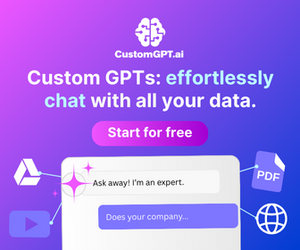-
Table of Contents
Artificial Intelligence Diagnosis: Revolutionizing Healthcare

Artificial intelligence diagnosis is transforming the way healthcare professionals detect and treat diseases. By leveraging advanced algorithms and machine learning, AI systems can analyze vast amounts of medical data with unprecedented speed and accuracy. This technology is not just a futuristic concept; it’s already making a tangible impact in hospitals and clinics worldwide. If you’ve been struggling to understand how AI fits into the diagnostic process, this article will guide you through its benefits, challenges, and real-world applications.
Table of Contents
- What Is AI Diagnosis?
- Benefits of AI in Diagnosis
- Challenges and Limitations
- Real-World Applications
- Future of AI Diagnosis
- Conclusion
What Is AI Diagnosis?
AI diagnosis refers to the use of artificial intelligence technologies to assist in identifying diseases and medical conditions. These systems rely on machine learning algorithms trained on large datasets, including medical images, patient records, and clinical studies. For example, AI can analyze X-rays, MRIs, and CT scans to detect abnormalities that might be missed by the human eye. Additionally, natural language processing (NLP) enables AI to interpret unstructured data like doctor’s notes and research papers.
One notable example is Google’s DeepMind, which has developed AI models capable of diagnosing eye diseases with accuracy comparable to human specialists. Similarly, IBM Watson Health uses AI to provide insights into cancer treatment options. These advancements highlight the potential of AI to enhance diagnostic accuracy and efficiency.
Benefits of AI in Diagnosis
The integration of AI into diagnostic processes offers numerous advantages. First, it significantly reduces the time required to analyze complex medical data. For instance, AI can process thousands of medical images in minutes, whereas a radiologist might take hours or even days. Second, AI systems can identify patterns and correlations that are not immediately apparent to human clinicians. This capability is particularly useful in early disease detection, where timely intervention can save lives.
Moreover, AI can help reduce diagnostic errors, which are a leading cause of medical malpractice claims. According to a study published in the Journal of the American Medical Association, AI-assisted diagnosis reduced error rates by 30% in certain cases. Additionally, AI can democratize access to healthcare by providing diagnostic support in underserved areas where medical expertise is scarce.
Key Benefits of AI in Diagnosis
- Faster data processing and analysis
- Improved accuracy and reduced errors
- Early detection of diseases
- Enhanced accessibility in remote areas
Challenges and Limitations
Despite its potential, AI diagnosis is not without challenges. One major concern is the quality of data used to train AI models. If the data is biased or incomplete, the AI system may produce inaccurate results. For example, a model trained primarily on data from one demographic group may not perform well for others. Additionally, the lack of transparency in AI algorithms, often referred to as the “black box” problem, makes it difficult for clinicians to trust and interpret the results.
Another issue is the ethical implications of relying on AI for critical medical decisions. Who is responsible if an AI system makes a wrong diagnosis? Furthermore, the integration of AI into healthcare workflows requires significant investment in infrastructure and training, which may be a barrier for smaller institutions.
Common Challenges in AI Diagnosis
- Data quality and bias
- Lack of transparency in algorithms
- Ethical and legal concerns
- High implementation costs
Real-World Applications
AI diagnosis is already being used in various medical fields with impressive results. In radiology, AI systems like Zebra Medical Vision can detect conditions such as lung cancer and cardiovascular diseases from imaging data. In pathology, AI tools like PathAI assist in analyzing tissue samples to identify cancerous cells. Furthermore, AI is being used in dermatology to diagnose skin conditions through image analysis.
One groundbreaking case study involves the use of AI to diagnose diabetic retinopathy, a leading cause of blindness. IDx-DR, an FDA-approved AI system, can detect the condition with 87% sensitivity and 90% specificity, enabling early intervention. Similarly, AI has been employed in cardiology to predict heart disease risk by analyzing electronic health records and wearable device data.
Notable AI Diagnosis Applications
- Radiology: Detecting cancers and cardiovascular diseases
- Pathology: Identifying cancerous cells
- Dermatology: Diagnosing skin conditions
- Ophthalmology: Detecting diabetic retinopathy
Future of AI Diagnosis
The future of AI diagnosis looks promising, with ongoing advancements in technology and research. One area of focus is the development of explainable AI (XAI), which aims to make AI algorithms more transparent and interpretable. This will help build trust among healthcare providers and patients. Additionally, the integration of AI with other emerging technologies like genomics and personalized medicine could revolutionize diagnostics.
Another exciting prospect is the use of AI in predictive analytics. By analyzing historical and real-time data, AI can forecast disease outbreaks and patient outcomes, enabling proactive healthcare interventions. Furthermore, the global AI in healthcare market is projected to grow from $6.7 billion in 2021 to $45.2 billion by 2026, reflecting the increasing adoption of this technology.
Future Trends in AI Diagnosis
- Development of explainable AI (XAI)
- Integration with genomics and personalized medicine
- Predictive analytics for disease outbreaks
- Rapid market growth and adoption
Conclusion
Artificial intelligence diagnosis is reshaping the healthcare landscape by improving accuracy, efficiency, and accessibility. While challenges like data bias and ethical concerns remain, the benefits far outweigh the drawbacks. Real-world applications in radiology, pathology, and other fields demonstrate the transformative potential of AI. As technology continues to evolve, the future



Leave a Reply